- 7 Top Flite Golf Clubs XL for Improved Performance - September 28, 2024
- Top Flite Golf Clubs: Top 5 Reasons to Choose Them - September 28, 2024
- Top 3 Golf Club Fitters for a Perfect Swing - September 28, 2024
As a beginner, you're about to reveal the secret to mastering the short game: understanding golf club bounce. Bounce angle, measured between the leading edge and the sole, greatly impacts turf interaction and shot performance. Choosing the right bounce is critical, as it influences how the club glides over the ground. With bounce angles ranging from 4° to 14°, you'll want to select the one that suits your swing type and course conditions. From firm lies to soft sand, the right bounce can make all the difference – and now that you've started to grasp the basics, you're ready to take your short game to the next level.
Key Takeaways
- Bounce angle, measured between the leading edge and sole, affects turf interaction and shot performance, ranging from 4° to 14°.
- Higher bounce angles lift the leading edge, preventing digging, and are suitable for specific swing types and turf conditions.
- Bounce angle categories include 4°-6° for firm lies, 7°-9° for normal turf, 10°-12° for soft rough, and 12°+ for deep sand.
- Choosing the right bounce angle improves contact, prevents sticking, and is essential for mastering the short game.
Wedge Bounce Defined
When you measure the angle between the leading edge of your wedge and its lowest point on the sole, you're calculating its bounce, a critical factor in your short game success.
This wedge bounce degree, typically ranging from 4° to 14°, affects how the club interacts with the turf, influencing shot accuracy and forgiveness on mishits. A higher bounce angle helps prevent digging, making it suitable for certain swing types.
To achieve a proper wedge bounce, consider your swing style – are you a digger, sweeper, or driver-slider? This self-awareness will help you determine the appropriate bounce needed for peak performance.
Understanding Bounce Angles
You're about to reveal the secret to choosing the perfect wedge for your game: understanding bounce angles, which can make all the difference in your short game success. The bounce angle, measured in degrees, determines how the club interacts with the ground during a swing. A higher bounce angle raises the leading edge, allowing the club to glide over the ground, while a lower bounce angle digs in more.
| Bounce Angle | Course Conditions |
|---|---|
| 4°-6° | Firm, tight lies |
| 7°-9° | Medium, normal turf |
| 10°-12° | Soft, thick rough |
| 12°+ | Deep sand, extreme conditions |
| Varies | Customized bounce and grind for specific swing types |
Understanding bounce angles helps you match your wedge selection to your swing type and typical course conditions. By choosing the right bounce angle, you'll improve contact, prevent the club from getting stuck, and boost your confidence in the short game. With this knowledge, you'll be able to navigate various course conditions with precision and accuracy. Remember, the right bounce angle is vital for mastering the short game.
Low Bounce Wedge Benefits
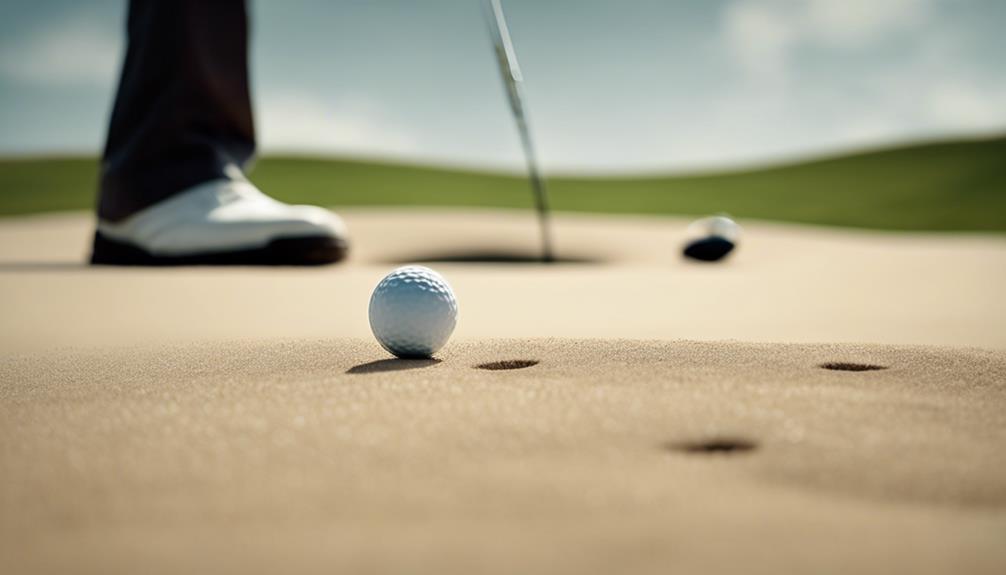
When you play on firm turf, you'll appreciate the benefits of low bounce wedges, which are designed to excel in these conditions.
With a low bounce wedge, you'll enjoy shallow swing advantages, including cleaner ball contact and more precision in your short game.
Firm Turf Benefits
On firm turf, golfers can capitalize on the benefits of low bounce wedges, which are specifically designed to provide cleaner ball contact and minimal ground interference. These wedges, with a bounce range of 4°-6°, excel in firm turf conditions, allowing you to achieve precision for short game shots.
| Benefit | Description | Impact on Short Game |
|---|---|---|
| Cleaner Ball Contact | Minimal ground interference | Improved Distance Control |
| Precision for Short Game | Suitable for sweeping swing styles | Better Trajectory Management |
| Effective Flop Shots | Clean contact from tight lies | Increased Confidence |
| Greater Control | Reduced mishits on firm surfaces | Enhanced Short Game Performance |
Shallow Swing Advantages
With a shallow swing style, you'll find that low bounce wedges become an essential tool in your short game arsenal, as they promote clean ball contact and minimize turf interaction.
These wedges, typically ranging from 4° to 6° of bounce, excel in executing flop shots from tight lies, allowing for precision in short game scenarios where high accuracy is essential.
As a shallow swing player, you'll benefit from the reduced risk of digging into the ground, enabling better control over short shots.
What's more, low bounce wedges require minimal divots for effective use, making them suitable for firm turf and hard sand conditions commonly found in many golf courses.
By providing a more direct strike on the ball, low bounce wedges enhance spin and trajectory control, helping you to achieve desired shot outcomes.
With a shallow swing style, incorporating low bounce wedges into your game will take your short game to the next level, providing you with the precision and control you need to master those critical shots.
Clean Ball Contact
You'll find that low bounce wedges, designed to facilitate clean ball contact, become indispensable for executing precise shots, especially from tight lies. As a golfer, you'll appreciate how these wedges, with a bounce range of 4°-6°, excel in situations that require shallow attack angles. By using a low-bounce wedge, you'll minimize the risk of digging into the turf, allowing for better control over distance and trajectory when approaching the green.
The minimal divot required for effective use of low bounce wedges promotes cleaner strikes, enhancing the likelihood of consistent, high-quality shots. This, in turn, enables you to achieve precision in your short game.
According to Bob Vokey, proper bounce selection can result in increased forgiveness, allowing for better outcomes even when strikes are less than perfect. By mastering the use of low-bounce wedges, you'll develop a more refined short game, with cleaner ball contact and increased control.
With practice and patience, you'll become more confident in your ability to execute precise shots, even from challenging lies.
Mid Bounce Wedge Options
When it comes to finding the right wedge for your game, mid bounce options, which typically feature a bounce angle between 7° and 10°, offer a versatile solution for various turf conditions and swing styles.
These wedges provide a balance of forgiveness and control, helping you achieve effective distance and trajectory around the greens. As a golfer with a neutral swing type and moderate attack angles, you'll appreciate the mid bounce wedge's ability to accommodate a wide range of shots from different lies.
Many popular wedge manufacturers, including Titleist and Callaway, offer mid bounce options that cater to different lofts, ensuring you can find the right fit for your game.
If you're looking to improve your short game, mid bounce wedges are a great choice. They perform well in both firm and normal turf conditions, giving you the confidence to take on challenging shots.
High Bounce Wedge Advantages
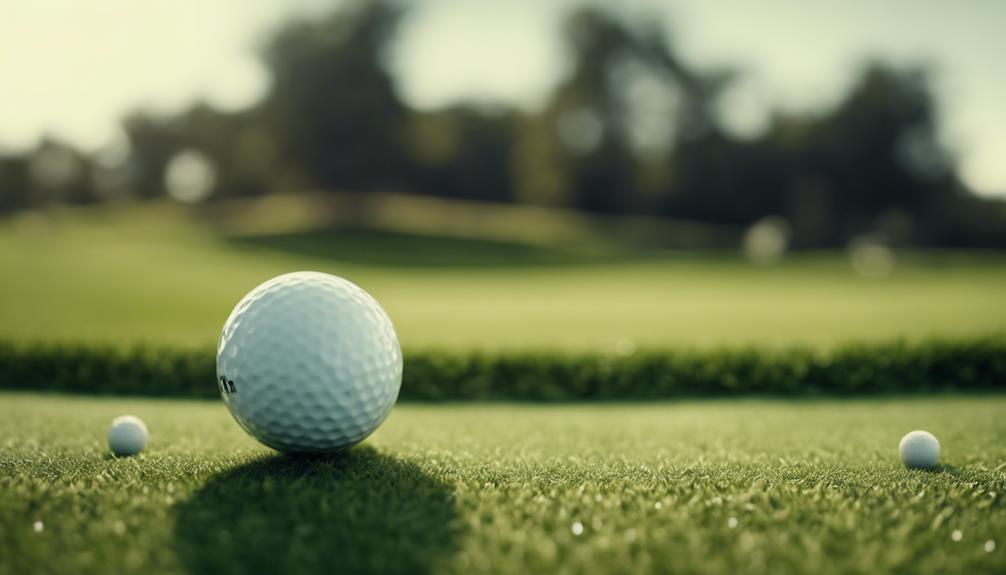
Golfers who struggle with digging or chunking their wedges in soft turf or sand will appreciate the benefits of high bounce wedges, which are specifically designed to glide effortlessly through these challenging lies. With a bounce angle exceeding 10 degrees, these wedges prevent the leading edge from digging into the ground, making them ideal for players with steep swing angles or those who take larger divots.
Here are some key advantages of high bounce wedges:
| Advantage | Description |
|---|---|
| Improved Turf Interaction | Prevents digging and chunking in soft turf and sand |
| Enhanced Spin Control | Allows for more effective shots around the green, especially from challenging lies |
| Sandy Condition Mastery | Reduces drag in soft sand, making it easier to escape bunkers efficiently |
Selecting the Right Bounce
With so many bounce options available, choosing the right one can be a challenging task, but understanding your swing type, typical course conditions, and lie frequency holds the key to revealing your short game potential.
As you deliberate on the ideal wedge bounce type, consider your swing style. If you have a sweeping swing, a low bounce (4-6 degrees) is ideal, while a steep angle of attack calls for a high bounce (10+ degrees) lob wedge. However, if you're unsure or have a neutral swing, choosing mid bounce (7-10 degrees) wedges offers versatility and is suitable for normal turf and various course conditions.
When deciding, think about the types of lies you frequently encounter. On firm turf, low bounce is effective, while soft lies benefit from higher bounce wedges.
To find the perfect fit, test different bounce options during practice sessions or consult with a golf professional. With the right bounce, you'll reveal consistent shots and improved short game performance.
Wedge Grind and Bounce
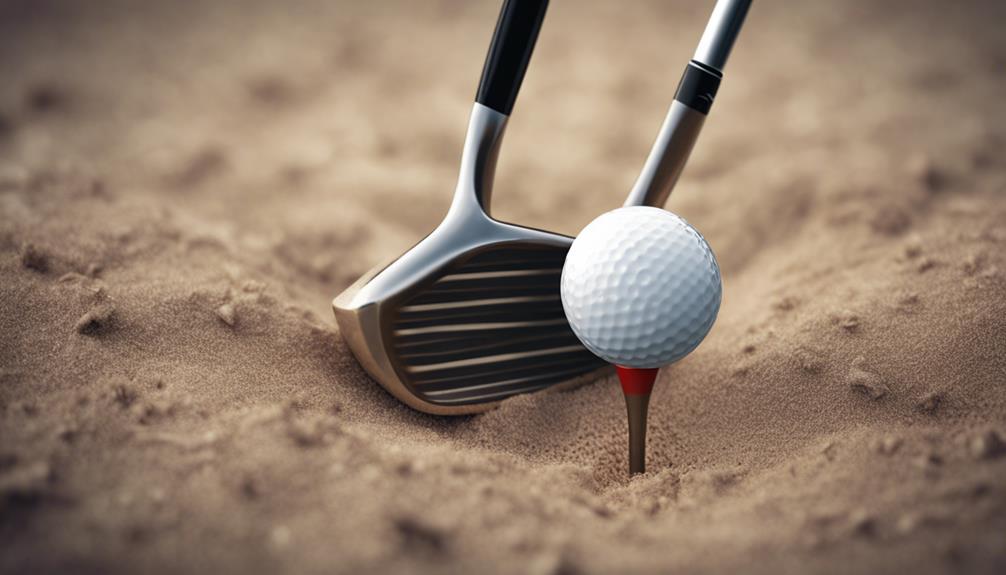
You've determined the ideal bounce for your wedge, but now it's time to contemplate the wedge grind, which can further customize how your club interacts with the turf and affects shot versatility.
The wedge grind refers to the shaping of the sole, which greatly impacts how the club behaves on different turfs and swing types. Different grinds, such as C grind for heel and toe relief or V grind for increased leading edge bounce, cater to specific needs.
For instance, a C grind is ideal for firmer turf and tighter lies, while a V grind excels on softer turf and deeper rough. Understanding how grind affects bounce allows you to make informed decisions when fitting your wedges to enhance overall performance.
By selecting the right grind, you can optimize spin, trajectory, and shot-making ability around the greens. Tour professionals often utilize multiple grinds based on course demands, highlighting the importance of customization.
Bounce and Swing Characteristics
Considering your individual swing style is essential when selecting the ideal bounce angle, as it greatly impacts how the club interacts with the turf and affects your overall shot-making ability.
Your swing characteristics, in particular, play a significant role in determining the most suitable bounce angle for your game.
If you have a steep swing, you'll benefit from high-bounce wedges (10 degrees and above) that help prevent digging into the turf or sand.
On the other hand, if you have a shallow swing angle, low-bounce wedges (6 degrees and lower) will promote cleaner contact with the ball.
Medium-bounce wedges (6-10 degrees) offer versatility, accommodating both square and opened face shots, making them suitable for a wide range of players.
The key is to understand how your swing characteristics interact with different bounce angles and adjust accordingly.
Additionally, be prepared to adjust your bounce angle based on course conditions and shot types to improve your overall performance, especially in challenging lies around the green.
Wedge Fitting and Selection
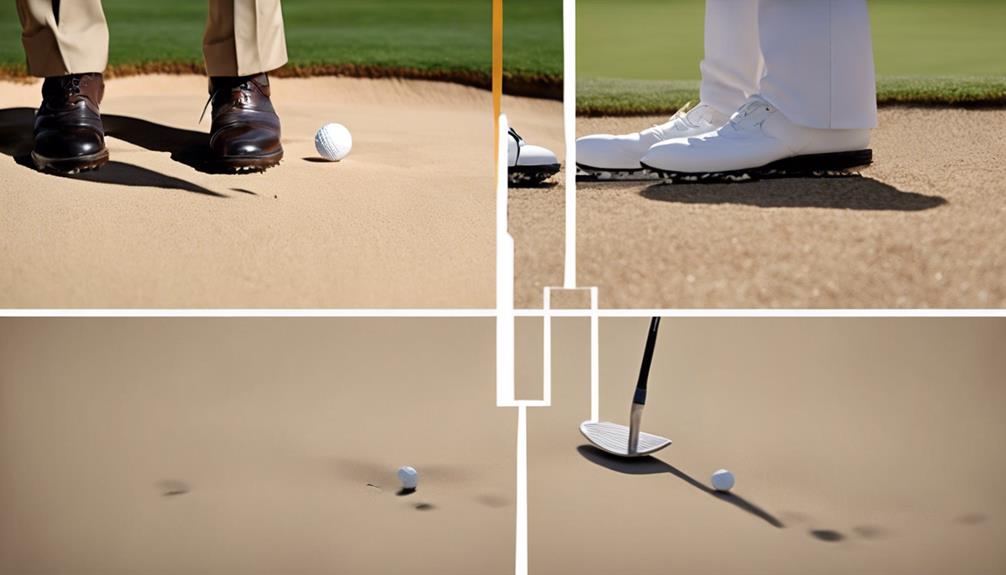
When it comes to wedge fitting and selection, you need to match your swing style to the right bounce angle and consider the course conditions you typically play in.
Proper fitting matters, as it can greatly impact your performance, so it's crucial to get it right.
Match Swing Style
To optimize your wedge play, it's essential to match your swing style with the right bounce angle, as this vital component of wedge fitting greatly impacts the effectiveness of your short game. By understanding your swing style, you can select the ideal bounce angle for your wedges, leading to improved consistency and control.
Here's a breakdown of the ideal bounce angles for different swing styles:
| Swing Style | Ideal Bounce Angle |
|---|---|
| Steep | 10+ degrees (high bounce) |
| Shallow | 4-6 degrees (low bounce) |
| Mid-range | 7-10 degrees (mid bounce) |
| Variable | Consult a professional or use fitting tools |
| Vokey Design SM10 | Offers customized bounce and loft options |
Bounce for Conditions
You'll need to take into account the course conditions you frequently play in to guarantee you're selecting the right bounce angle for your wedges. This is essential because the proper bounce can greatly impact your shot performance.
Here are three key considerations for bounce selection based on course conditions:
- Firm to normal turf: If you play on courses with firm to normal turf, a mid-bounce wedge (7°-10°) will provide the necessary versatility to navigate various lies and swing types.
- Soft sand and steep attacks: If you frequently play in soft sand or have a steep attack angle, a high-bounce wedge (10°+) will help prevent leading edge drag and enhance spin control.
Proper Fitting Matters
Selecting the right wedges for your game requires a deliberate approach, as proper fitting can make all the difference in revealing your full potential around the greens.
When you're properly fit, your bounce angle is matched to your swing type and the typical course conditions you encounter. This can greatly enhance your performance.
You'll find that each wedge serves a specific purpose, and there's no one-size-fits-all bounce. Players tend to benefit from high bounce if they've steep swings, while those with shallow swings do better with low bounce.
Tools like the Wedge Selector Tool can help you identify your ideal wedge specifications based on your technique and playing conditions.
Consulting with a golf professional during the fitting process can provide personalized recommendations that lead to improved shot accuracy and confidence around the greens.
Common Bounce Misconceptions
Despite its importance in achieving consistent results, bounce remains a misunderstood aspect of golf clubs, with several misconceptions surrounding its role and application. As you explore the world of golf, it's crucial to separate fact from fiction.
Here are three common bounce misconceptions to watch out for:
- Bounce isn't sole width: Don't confuse these two distinct features, as they affect how your club interacts with the ground in different ways.
- Higher bounce isn't always better: Your swing type and course conditions should dictate the right bounce for best performance.
When it comes to wedge play, having the right bounce can make all the difference. It's not about dragging too much or relying solely on bounce to save your shots. Instead, it's about finding the best contact and angle forces that work for you.
Mastering Wedge Bounce Control
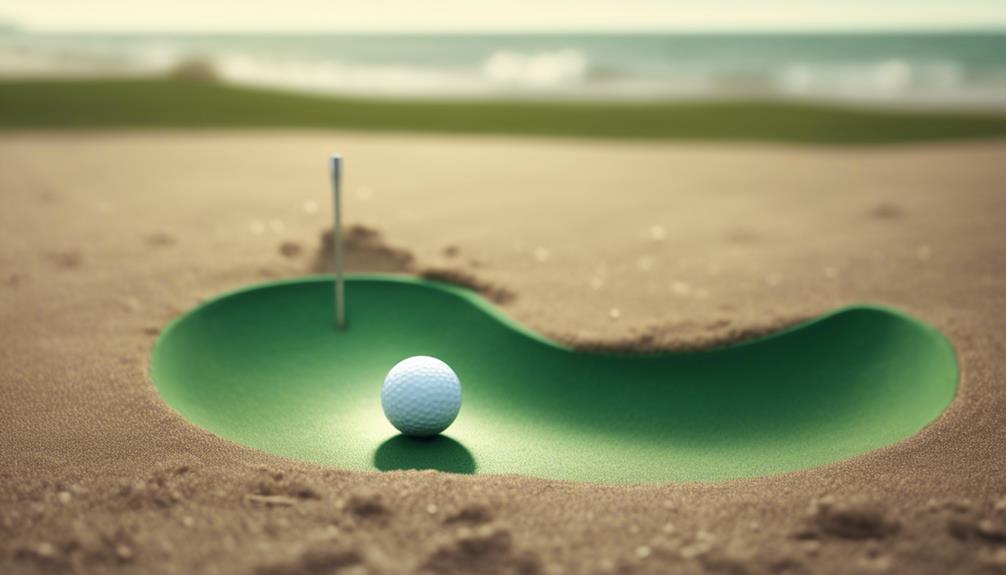
As you work to master wedge bounce control, it's crucial to understand the fundamentals of wedge bounce, including what it is and how it affects your shots.
You'll need to grasp how the bounce angle impacts your club's interaction with the turf, and how to select the right bounce for your swing type and playing conditions.
Wedge Bounce Explained
When you grip your wedge, the bounce angle – the measurement between the leading edge of the club and the lowest point of the sole – plays a vital role in determining how the clubhead interacts with the ground. Mastering this dynamic is key to revealing consistent, high-quality shots.
Here are three essential factors to take into account when it comes to wedge bounce:
- Higher bounce for steep swings: If you have a steep swing, a higher bounce angle (10° and above) can help prevent digging into the ground, especially in soft turf conditions.
- Low bounce for shallow swings: If you have a shallow swing, low bounce wedges (4°-6°) are ideal for achieving clean contact from firm turf and hard sand bunkers.
Bounce Angle Impact
You've grasped the fundamentals of wedge bounce; now it's time to put this knowledge into practice by mastering wedge bounce control, which can make all the difference in executing high-quality shots consistently.
The bounce angle, defined as the angle between the leading edge of the wedge and the ground, plays an essential role in how the club interacts with different turf conditions during wedge shots.
Understanding the impact of bounce angle on your shots is key to improving your short game. Higher bounce angles (10 degrees and above) are beneficial for players with steeper swings, as they help prevent the club from digging into soft turf or sand, improving shot execution.
Mid bounce wedges (7-10 degrees) offer versatility for a variety of swing types and turf conditions, making them a popular choice. Low bounce wedges (4-6 degrees) are ideal for players with a sweeping swing style, facilitating clean contact on firm turf and allowing for precise shot-making from tight lies.
Proper Bounce Selection
Selecting the right bounce angle for your wedge is essential, as it can make all the difference in executing high-quality shots consistently. With so many options available, it's important to understand which bounce is best suited for your unique swing style and typical course conditions.
To master wedge bounce control, consider the following:
- Low bounce wedges (4-6 degrees) are ideal for shallow swing styles and firm turf, ensuring clean ball contact with minimal digging.
- Mid bounce wedges (7-10 degrees) offer versatility for various swing types and course conditions, making them a popular choice for most golfers.
Utilizing tools like the Vokey Wedge Selector Tool can help you identify the right bounce based on your individual swing characteristics and typical course conditions.
Frequently Asked Questions
How Do You Use the Bounce on a Golf Club?
You use the bounce on a golf club by adjusting your swing dynamics to optimize turf interaction, considering the bounce angle to achieve shot versatility, and selecting the right club based on lie angle, all to master precise shots.
Is 12 Degrees of Bounce Too Much?
You're wondering if 12 degrees of bounce is too much, but consider the benefits: it provides forgiveness on miss-hits and versatility in various lies, debunking myths about its impact, especially when compared to lower bounces, and allowing for adjustments to suit your swing.
What Does 8 Bounce Mean on a Wedge?
You'll get consistent wedge performance with 8 degrees of bounce, as it balances forgiveness and control, allowing for smooth turf interaction, improved sand play, and enhanced shot consistency, making it an ideal club selection for your game.
How to Determine What Bounce You Need on Wedges?
Did you know 75% of golfers use the wrong bounce angle? To determine your ideal wedge bounce, consider your swing type, turf interaction, and playing conditions; then, experiment with different angles to find the perfect fit for your technique and personal preference.
Conclusion
As you stand in the bunker, wedge in hand, the fate of your score hangs in the balance.
But with a deep understanding of bounce, you're no longer at the mercy of the sand.
You're the master of your own destiny, able to escape even the most treacherous traps with ease.
Now, go forth and conquer the course, your newfound knowledge of bounce your trusty guide.




